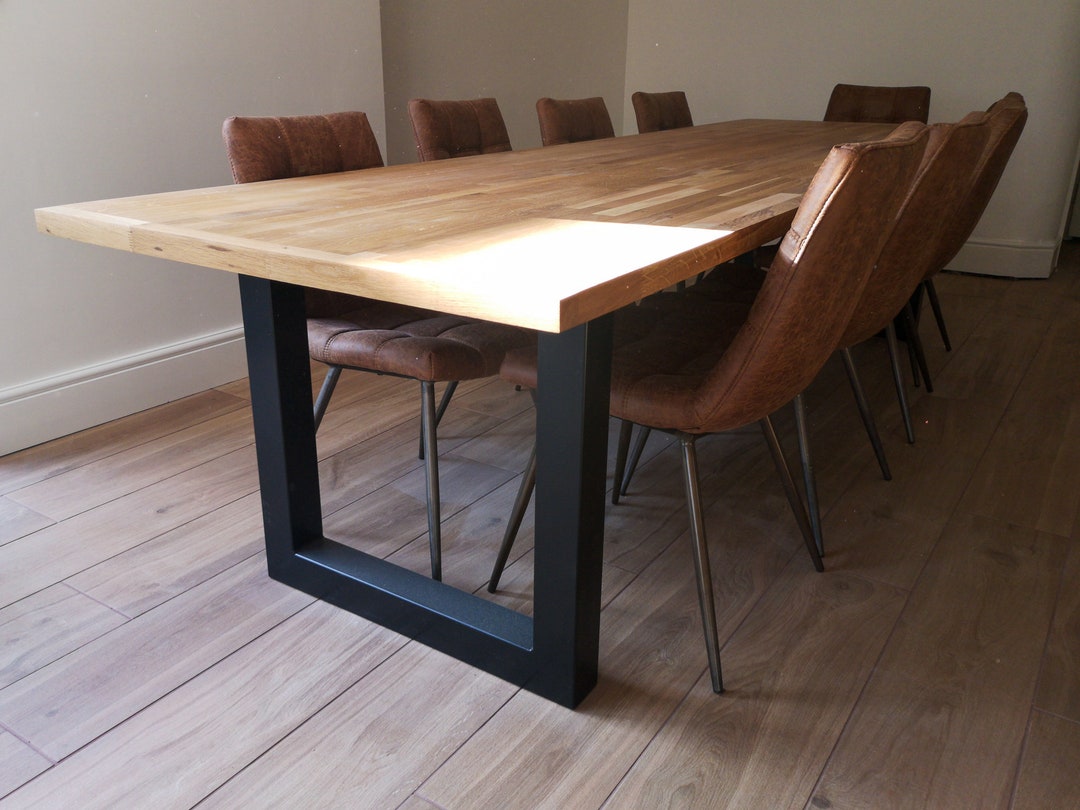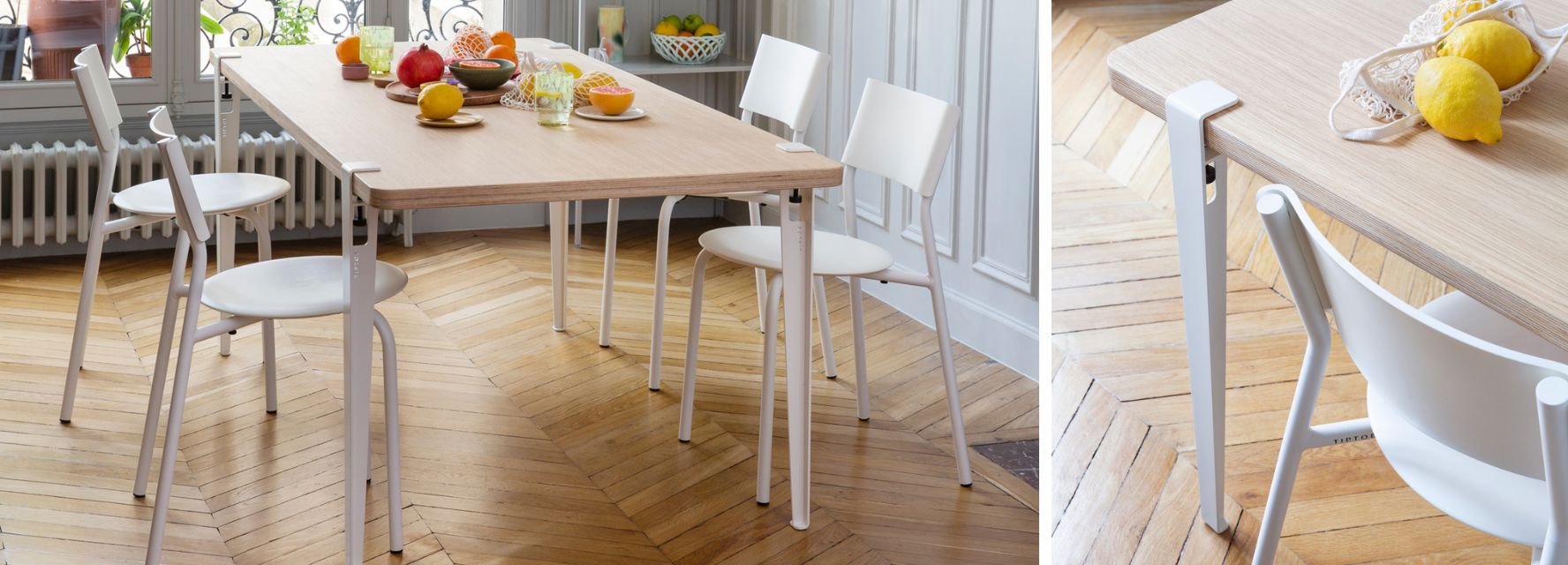Tips for Installing Dining Room Table Legs for a Modern Look
Tips for Installing Dining Room Table Legs for a Modern Look
Blog Article
Specialist Tips for Installing Dining-room Table Legs for Optimum Security
When it comes to mounting dining room table legs, accomplishing optimum stability is critical for both performance and looks. What specific strategies can improve security also further?
Pick the Right Legs
When picking the suitable legs for your dining room table, it is crucial to take into consideration both performance and aesthetics. The legs you choose will dramatically influence the overall style and security of the table. Review the table's intended use; if you anticipate constant events, stronger legs, such as those made from solid wood or metal, may be much more ideal, as they supply increased durability and assistance.
Next, think about the height and style of the legs in relation to the tabletop. Standard table generally range from 28 to 30 inches in height, so make sure the legs line up with this requirement for comfort. The style of the legs ought to match the layout of the table top-- whether it be modern, rustic, or typical. Tapered legs can add a contemporary touch, while transformed legs could communicate a more classic visual.

Select Appropriate Equipment
Just how can the best equipment enhance the security and longevity of your dining-room table? The selection of suitable equipment is vital to ensuring that the legs of your table are safely connected and able to endure routine usage. Premium screws, screws, and braces provide the needed toughness to sustain the weight of the table, in addition to any kind of additional loads put upon it throughout events or dishes.
When picking screws, decide for those made from sturdy materials such as stainless-steel or brass, which withstand deterioration and maintain honesty with time. The size of the screws is similarly important; they must pass through deeply right into the table's framework without endangering honesty. For bolted links, take into consideration making use of lock washers to stop loosening up as a result of resonance or movement.
In addition, using edge brackets can include extra support, particularly for larger tables or those with larger tops. These braces disperse weight equally and help preserve the table's form. Making certain that the equipment you choose is suitable for the certain products of your table will certainly additionally improve its overall security and durability, allowing you to appreciate your eating experience for years to come.
Ensure Correct Positioning
Appropriate placement of dining room table legs is crucial for both visual appeal and useful security. To accomplish optimum alignment, begin by gauging the distance from the table's edges to the leg add-on points.
Make use of a level during installment to verify that each leg is perpendicular to the table top. This action is vital, as also small discrepancies can rise right into significant security concerns over time. It is a good idea to note the desired leg settings on the bottom of the table with a pencil or covering up tape prior to securing them. This practice serves as an aesthetic overview, allowing for adjustments as needed.
Moreover, ascertain the placement after the initial screws are tightened, as adjustments may be required before completely protecting the equipment. By focusing on correct placement, you not only improve the table's general layout but additionally ensure that it stays steady and functional for many years to find.

Think About Weight Circulation
After making sure proper alignment of the eating area table legs, it is very important to think about weight distribution to boost stability and functionality. dining room table legs. Correct weight circulation is important in avoiding guaranteeing and wobbling that the table can sustain its intended lots without danger of tipping or collapsing
When placing the legs, ensure they are placed at equivalent ranges from the facility of the table to evenly disperse the weight across the framework. Consider the weight of the table top and any things that will often hinge on it, such as ornamental pieces or tabletop devices. Tables with larger surfaces should preferably have legs located closer to the edges, as this makes the most of the base of support and decreases the threat of instability.
Additionally, if the table is meant for usage in a high-traffic area, consider utilizing larger materials for the legs or adding maintaining elements, such as cross-bracing or a lower rack - dining room table legs. These adjustments can assist keep equilibrium and avoid changing during usage. Inevitably, a well-considered weight distribution approach will considerably boost the table's overall efficiency, ensuring it remains a useful and appealing centerpiece for your dining room
Test Stability Before Use
Checking the security of the dining-room table prior to usage is an essential step that needs to not be overlooked. Get More Info Ensuring that the table is secure and steady can prevent accidents and extend the life expectancy of the furniture. Begin by applying mild stress to various factors on the table surface area. Press down on the facility and afterwards along the sides, observing any kind of wobbling or changing. If the table shows instability, recognize the legs or joints that might call for change.
Following, check that all screws and fasteners are tightened up properly. Loose links can lead to instability and prospective damages gradually. If required, use click here to find out more wood glue on joints to enhance security, ensuring to enable appropriate drying time.

Verdict
To conclude, the installation of eating room table legs calls for cautious consideration of products, hardware, positioning, and weight distribution to accomplish maximum security. By picking durable legs and high-quality fasteners, making certain precise positioning, and distributing weight equally, the architectural integrity of the table can be substantially boosted. Conducting a stability test prior to routine usage additionally makes sure that the table will endure daily stress, consequently giving a dependable and risk-free eating experience.
When it comes to mounting eating room table legs, attaining optimum stability is critical for both performance and appearances. The legs you choose will considerably affect the total layout and security of the table (dining room table legs). Standard dining tables normally vary from 28 to 30 inches in height, so guarantee the legs align with this right here requirement for comfort.Appropriate positioning of eating area table legs is necessary for both visual charm and functional security.In verdict, the setup of dining area table legs calls for cautious consideration of products, weight, equipment, and alignment distribution to achieve optimum security
Report this page